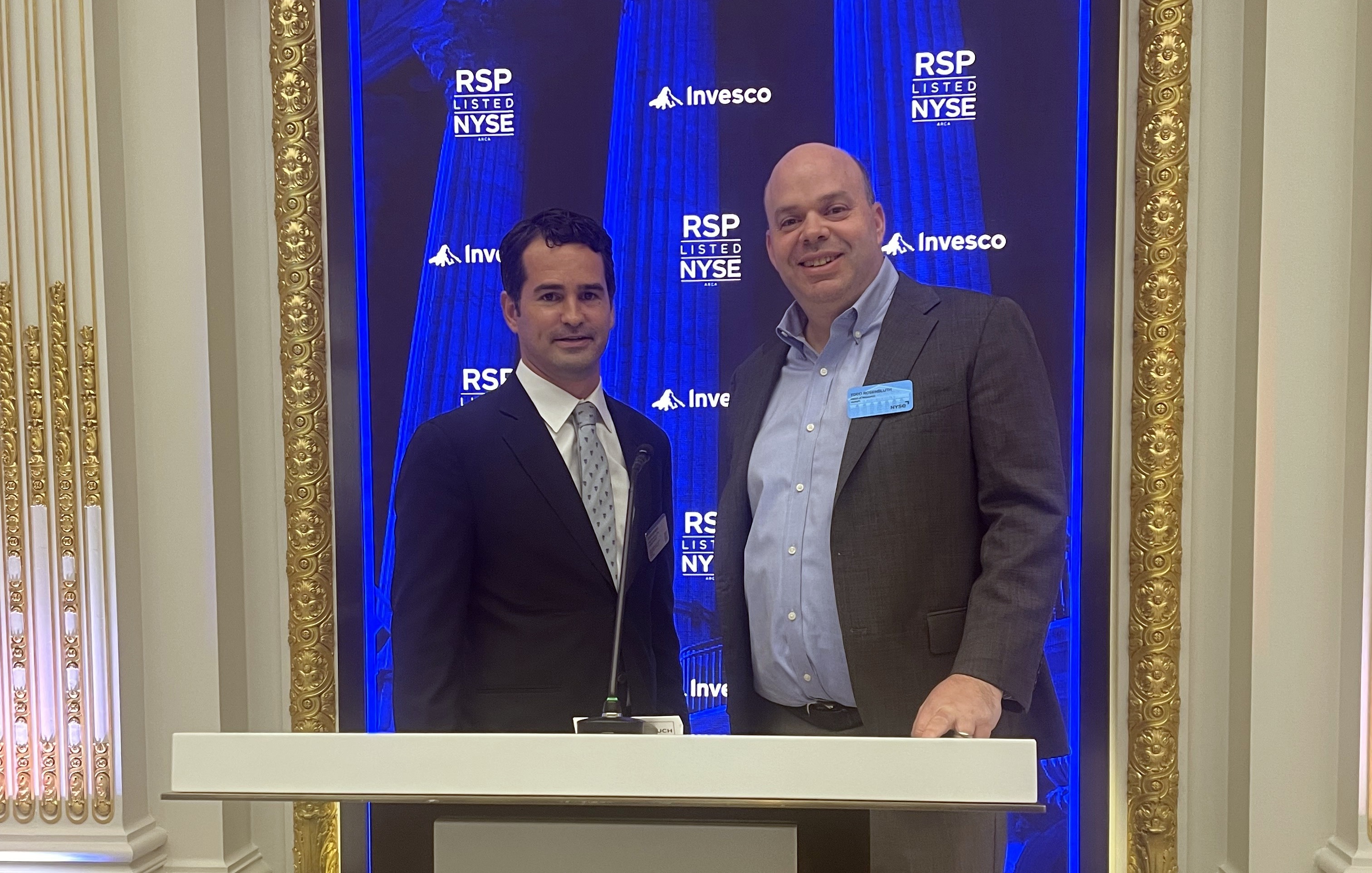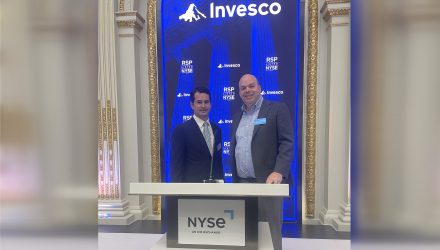When the now-$34 billion Invesco S&P 500 Equal Weight ETF (RSP) first began trading 20 years ago last week, the world was very different. This was before the advent of the “do not call” list limiting telemarketing, just after the euro became the official currency of the European Union, and back when I had more hair. RSP’s launch was a key milestone for the ETF industry and for what have become known as smart beta products.
These funds gained traction as an alternative to market cap-weighted, index-based offerings, as they provide an approach more commonly found through actively managed mutual funds, but for a significantly lower cost and with more predictability. Executives from Invesco were at the New York Stock Exchange this week to ring the closing bell and celebrate RSP’s successful first 20 years.

“The launch of RSP kicked off the smart beta ETF revolution, and having 20 years of live track record now answers a lot of questions about smart beta performance,” explained John Hoffman, Americas head of Invesco ETFs and indexed strategies, in an exclusive interview with VettaFi. “From inception to March 2023, RSP has outperformed the cap-weighted S&P 500 and 99% of active managers in the large-cap blend category.”
Between April 24, 2003, and March 30, 2021, RSP generated an annualized total return of 10.8%, ahead of the 10.0% gain for the S&P 500 Index. According to ETF data from LOGICLY, a recently acquired VettaFi business, RSP pulled in an impressive $17 billion in the last three years due to consistent inflows.
“There has been strong demand for equal-weighted approaches from investors seeking to reduce concentration risk and invest in a more balanced way,” noted Hoffman.
In addition to RSP, Invesco offers equally weighted ETFs tied to the 11 sectors of the S&P 500 Index, including the Invesco S&P 500 Equal Weight Technology (RYT) and the Invesco S&P 500 Equal Weight Financials (RYF), which provide diversification from sector heavyweights like Apple, Microsoft, and JPMorgan.
Invesco’s ETF lineup was the first to primarily consist of smart beta ETFs, and the potential benefits of those strategies continue to drive assets to the category. At the current growth rate, Invesco expects the ETF industry’s smart beta assets under management to hit $1 trillion by the end of 2023 and $2 trillion by 2027.
The firm currently has the largest number of smart beta ETFs in the United States, including 93 that have at least a 10-year track record and 117 ETFs that in total have $100 billion in assets under management.
“Flexibility, convenience, control, predictability, and precision are driving adoption of smart beta ETFs, but we still feel like we are in the early innings of smart beta growth,” explained Hoffman.
In addition to equally weighted ETFs, the firm offers funds like the Invesco S&P 500 Quality ETF (SPHQ) and the Invesco S&P 500 Low Volatility ETF (SPLV) that provide a slice of the S&P 500 Index based on fundamental- or price-based attributes.
SPHQ owns large-cap companies with strong balance sheets and high return on equity, like Broadcom, Chevron, and Eli Lilly. Meanwhile, SPLV owns the stocks that have the lowest realized volatility over the past 12 months, including Con Edison, Hershey, and Kimberly-Clark.
So, here’s to the first 20 years of RSP and its smart beta ETF cousins, and to 20 or more years of VettaFi providing education on them.
For more news, information, and analysis, visit the Portfolio Strategies Channel.
Visualizations and data provided by LOGICLY, which is a wholly owned subsidiary of VettaFi.

